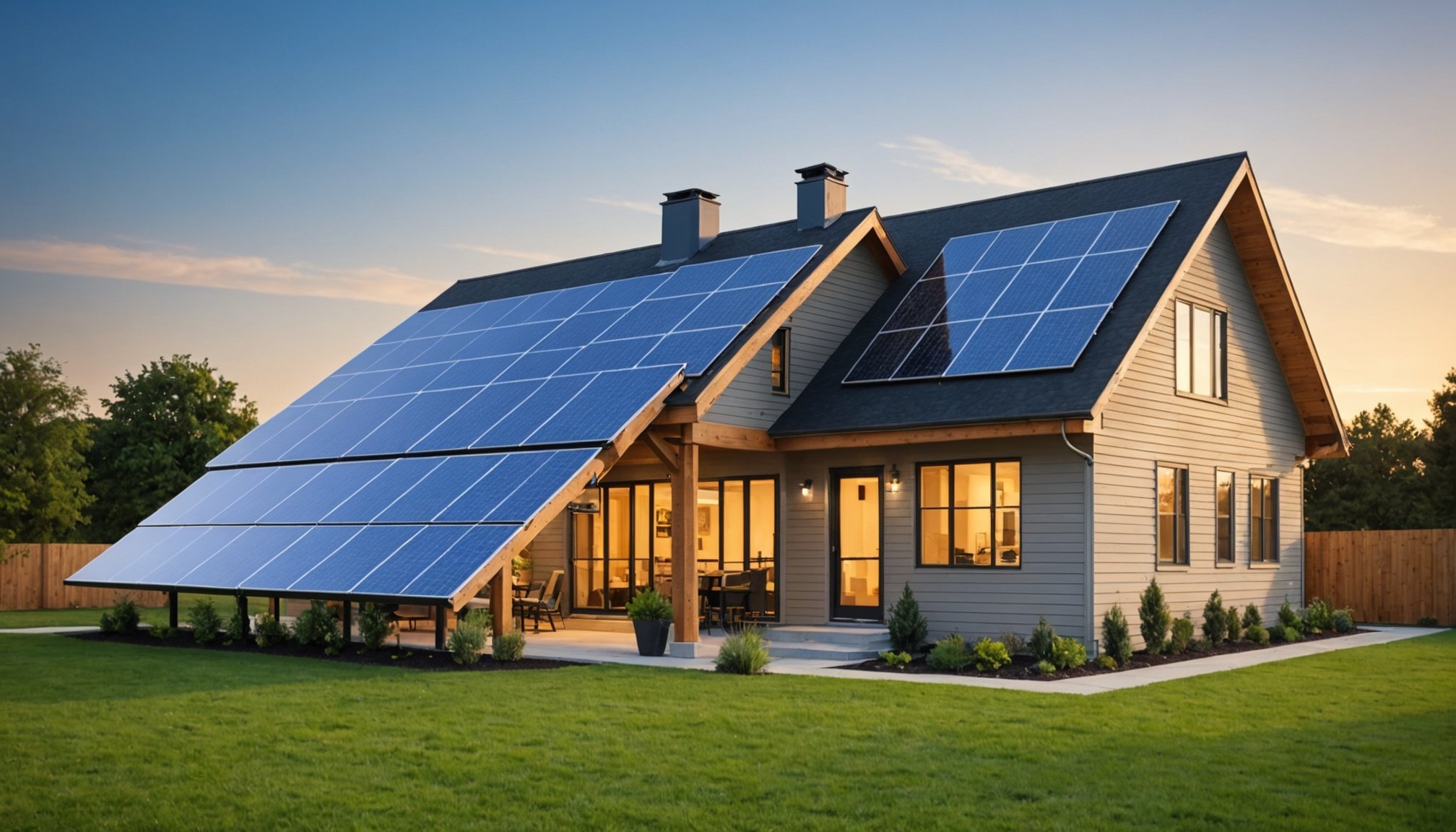Latest Advancements in Home Renewable Energy Technologies
The latest renewable energy innovations have transformed the landscape of home energy solutions, offering consumers more efficient and sustainable options. One of the most notable breakthroughs is in solar technology. Recent improvements, such as enhanced solar panel efficiency and the advent of solar shingles, offer homeowners an aesthetically pleasing and space-efficient solution. These advancements make solar energy an increasingly viable option for residential use, while also reducing installation costs over time.
In the wind energy sector, small-scale wind turbines have emerged as promising candidates for home use, especially in rural settings where space allows for adequate placement. These turbines are now quieter and more effective than ever before, positioning them as a feasible option for sustainable energy. However, their viability often depends on geographic and environmental conditions, making them less suitable for densely populated urban areas.
In parallel : Tailored arabic lessons: your path to fluency online
Furthermore, sustainability technologies are substantially bolstered by innovations in energy storage. New battery technologies offer improved storage capacity and reliability, ensuring consistent energy supply when renewable sources are intermittently unavailable. These advancements facilitate an increasingly seamless integration of renewable energy systems in homes, advancing both cost efficiency and sustainability for the consumer.
Innovative Renewable Energy Solutions for Homeowners
Homeowners today benefit from cutting-edge technologies that promise to redefine residential energy consumption. Recent advances in solar panel technology incorporate not only improved efficiency but aesthetic enhancements, such as solar shingles. These integrate smoothly with existing roofing while maintaining energy production, providing a visually appealing alternative to traditional panels.
Also read : Revolutionizing retail in the uk: the impact of ai-powered predictive analytics on market success
In wind energy, residential adaptation is seeing a surge with small-scale wind turbines. These innovations bring heightened efficiency, reduced noise, and increased feasibility to a wider audience. Urban installations face challenges due to space and environmental constraints, but rural areas can effectively harness this energy source due to vast, open terrains. This increased adaptability positions wind energy as a more enticing proposition in home energy solutions.
Moreover, developments in energy storage are pivotal. Breakthroughs in battery technologies provide reliability and ensure energy remains available when renewable sources like solar and wind are inactive. The integration of these sustainability technologies translates directly to reduced energy costs and higher renewable reliability. Collectively, these advancements exemplify how innovative home energy solutions are evolving to meet consumer demands for efficiency and environmental responsibility.
Case Studies of Successful Implementation
Examining renewable energy case studies reveals the transformative impact of adopting these energy solutions. Several homeowners have successfully transitioned to renewable systems, showcasing both economic and sustainability advantages. For instance, individuals implementing solar shingles have reported substantial decreases in utility bills while enhancing property aesthetics. Similarly, those in rural settings using small-scale wind turbines have highlighted energy independence and resilience.
Key insights from early adopters underline the importance of tailored sustainability technologies. One homeowner emphasized the need for thorough site assessments before installation, ensuring optimal system performance and long-term savings. Another case noted the critical role of professional consultations in choosing suitable home energy solutions, demonstrating how expert guidance can prevent costly mistakes.
Statistics further support these anecdotes, showing average savings of 20-50% on energy costs among these pioneering households. Such savings, combined with government incentives, create a compelling case for broader adoption. By learning from these case studies, potential adopters can better navigate their renewable energy journey, leading to informed decision-making and successful outcome implementations. As the field progresses, these innovative solutions will continue to offer substantial benefits to environmentally-conscious consumers.
Expert Insights on Future Trends
As the realm of renewable energy trends continues to evolve, industry leaders and experts offer valuable perspectives on emerging developments. Notably, insights from executives at key renewable firms underscore the potential for breakthrough technologies like solar perovskites to revolutionize solar energy usage. These advancements promise higher efficiency and lower costs, making solar energy more accessible to the average consumer.
In wind energy, experts project that vertical axis turbines could gain traction in urban environments due to their compact design and ability to operate in turbulent winds. These insights highlight the importance of innovating for diverse settings to expand wind energy’s reach.
Regulatory changes play a pivotal role in steering future developments. For instance, government incentives and initiatives are critical in fostering a conducive environment for renewable energy innovations. Anticipated shifts in policies aim to bolster investment and technological progress, thereby accelerating adoption rates.
Industry contributors also emphasize collaboration between public and private sectors to drive sustainable solutions. This synergy is seen as essential for overcoming barriers and enhancing the effectiveness of sustainability technologies. Such concerted efforts are set to shape the renewable landscape, paving the way for impactful, long-term changes.
How to Choose the Right Renewable Energy Solution
When selecting the ideal renewable energy solution for your home, understanding your unique energy needs and goals is crucial. Begin by assessing your current energy consumption patterns and identifying any future sustainability objectives. This foundational evaluation will guide your decision-making process as you explore available options.
Comparing renewable energy technologies can seem daunting, but focusing on the core benefits and limitations of each option can make the choice clearer. For instance, solar technologies such as solar panels and solar shingles offer varying degrees of efficiency and aesthetic preferences. Meanwhile, small-scale wind turbines might present an opportunity for residents in wind-rich, rural settings.
Key factors include your location and the physical constraints of your property, like roof space and wind exposure. Consumers can simplify this process by prioritising technologies that align closely with their lifestyle and environmental conditions.
Practical tips: Work with reputable service providers who can offer expert evaluations and advice tailored to your home. Consider energy storage solutions to optimise renewable energy reliability and evaluate any government incentives that might affect the cost-effectiveness of installations. By thoroughly researching and comparing technologies, homeowners can make informed decisions that align with both their environmental values and financial goals.
Practical Tips for Implementation
Implementing renewable energy at home requires careful planning and informed decisions. Below are essential strategies and steps for homeowners starting their renewable energy journey.
Steps to Get Started
-
Assess Energy Needs: Begin by analyzing your current energy consumption to determine what renewable sources can offset it most effectively.
-
Research Options: Explore various energy solutions like solar, wind, or hybrid systems. Cutting-edge technologies should be considered for their long-term benefits.
-
Consult Experts: Hire reputable service providers familiar with home energy solutions to conduct site assessments and offer tailored advice.
Maintenance and Monitoring
Regular upkeep of sustainability technologies is crucial. Scheduled maintenance ensures systems function optimally, prolonging their lifespan and efficiency. For instance, cleaning solar panels and inspecting wind turbine mechanics should be routine tasks.
Advanced monitoring technologies facilitate the tracking of energy usage and system performance. Apps and smart home devices can alert homeowners to inefficiencies, boosting system reliability and reducing costs over time.
By following these implementation tips, homeowners can embark on a seamless transition to renewable energy technologies, effectively improving both environmental impact and utility savings.











